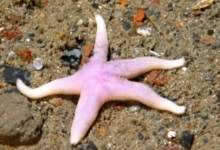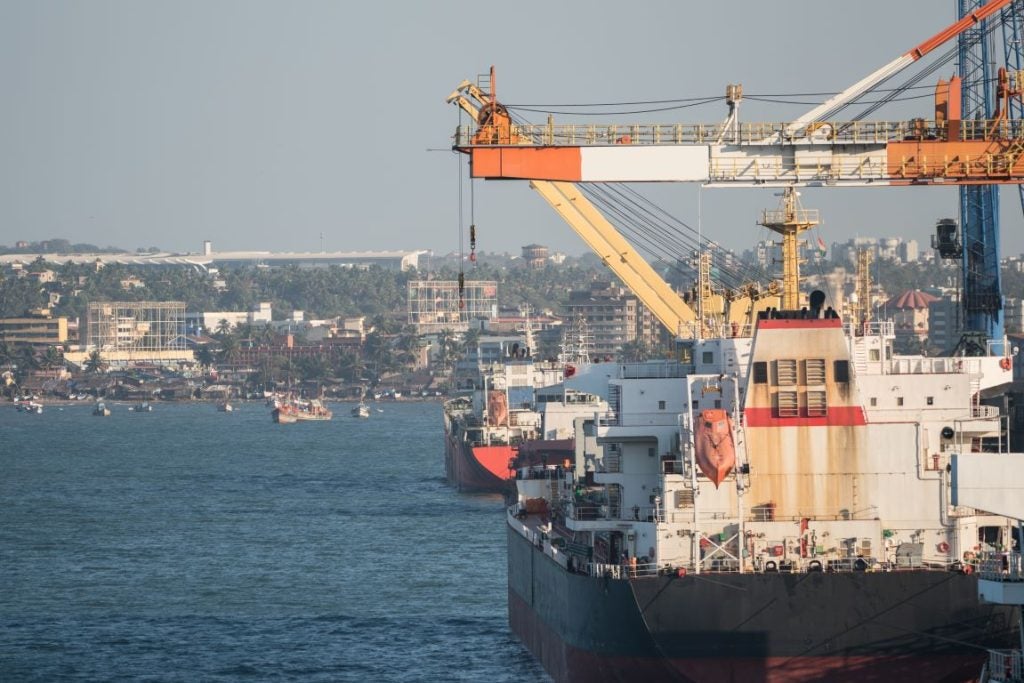
There is a lot that we already know about the environmental impact of oil once it’s extracted, processed and sent around the world to power cars and fuel economies. But to those outside the industry, the natural environment that surrounds it at the point of extraction is an area of intrigue and mystery.
The Serpent Project is working to change that by combining the infrastructure that the oil and gas industry has placed in the depths of the oceans with the resources and expertise of the global scientific community.
Through the project, scientists both train up offshore ROV operators to become part-time marine biologists and take control of the technology on specially arranged trips in order to capture a clearer picture of the habitats that surround operations. With offshore giants such as Statoil, Shell, Total and Chevron offering time and resources on operations across the North, Atlantic, Pacific and Arctic and Indian Oceans, the project takes subsea understanding to new depths.

Found 580m below the surface in tropical muddy sand, the Carid Shrimp was caught by the Clansman 2 ROV in the Western Australia region. The highly streamlined member of the Arthropod family is perfectly suited for surviving at such depths, swimming freely and feeding mainly on a diet of parasites, algae and plankton. Sometimes referred to as the housekeepers of the sea, Carid shrimps share burrows and holes with other creatures and are known to clean the mouths and gills of their benefactors.
See Also:

How well do you really know your competitors?
Access the most comprehensive Company Profiles on the market, powered by GlobalData. Save hours of research. Gain competitive edge.

Thank you!
Your download email will arrive shortly
Not ready to buy yet? Download a free sample
We are confident about the unique quality of our Company Profiles. However, we want you to make the most beneficial decision for your business, so we offer a free sample that you can download by submitting the below form
By GlobalDataSharing the same habitat as the Carid Shrimp, the Pink frogmouth or Chaunax pictus, is a member of the sea toad family that operates at depths of between 200m and 660m beneath the surface and can be found around the swirling around the worlds’ continental shelves. Growing up to 40cm long, the frogmouth will raise itself on its pelvic fins in an attempt to deter unwanted company.

Picked up by the Magnum 62 ROV operated by Petrobras around its Campos Basin site off the coast of Brazil, this particular member of the Benthoctopus family was seen swimming and moving along the seabed at a depth of up to 1,540m below the surface. Living in habitats of temperate gravel and sand, this family of Octopus is still being understood, with new species discovered being identified at a current rate of around 1-2 per year. The predatory species has a particular taste for brittle stars, with a study of the stomach contents of 70 specimens finding that more than half fed exclusively on them.

A member of the Chimaeridae family, this small-eyed rabbitfish or hydrualagus affinis was spotted in the Orphan Basin near Newfoundland in Canada by Chevron Canada. Distributed across the northern reaches of the Atlantic Ocean at depths of around 300m to as low as 2,410m below, the species is identifiable through its short, blunt tipped nose and gradually sloping back and thick, full lips. Specimens range from 32cm to 147cm in length.

Believed to be female, this specimen of the Leachia species of glass squids was captured at the Belford Dolphin rig in Mozambique at a depth of 1,159m. Reaching a size of up to 20cm long, the Leachia are characterised by raised cartilage spikes set on two parallel ridges and two large round fins. The female of the species develop light organs on the ends of their arm pairs as they mature, which is believed to occur in order to attract mates.

Pictured as it draws its tentacle through its mouth to feed at the Statoil operated Ocean Rig Poseidon is the Actinernus anemone. Found at a depth of 2,601m in deep-sea mud off the coast off Tanzania, the specimen of the benthic organism is one of four validated species found in deep seas across the world.

This specimen of the Henricia sea star, also known as a Pacific blood star, was found back in 2006 on the sea floor 480m below the surface. The benthic organism was discovered near the Sena Don rig in the Faroe-Shetland channel and lives on the sand and gravel. Feeding mainly on sponges and small bacteria, the sea star transports sustenance through its mucus or by pressing its stomach against its chosen food, such as the surface of a sponge.

Caught hiding beneath an offshore pipe on the subarctic sand in the Barents Sea of the Norwegian Arctic is the Atlantic wolfish. Currently a ‘species of concern’ due to overfishing and unintentional capture, the Atlantic wolfish is often used to indicate the health of other bottom feeders. In order to sustain themselves in such cold conditions, they produce a natural antifreeze to keep their blood moving fluidly.

Here, a group of hagfish are captured swimming around a pipe at the Boa Deep Sea project by Boa and Oceaneering 200m beneath the surface in Norwegian waters. The small eel shaped marine fish are sometimes called slime eels, courtesy of their ability to produce copious amounts of slime. They remain the only known species to have a skull but no spinal column. Current species remain very similar to those that existed up to 300 million years ago.

Caught via a baited trap, the Giant Isopod or Bathynomous giganteus was found in the Venezuelan Basin in the Atlantic on the seafloor 543m below by project partners Statoil, Transocean and Subsea 7. Reaching up to 37cm in length and a weight of 1.7km the giant isopods are believed to be the biggest of their family.

This sponge, surrounded by mussel shells, Devonshire cup corals and assorted anemones, was captured at the bottom of the Thistle platform in the North Sea. Nestled among rock and sand at a depth of 165m below, the precise species of the sponge is not yet known.

Project partners Transocean, Subsea 7 and BP captured this image of Brisingid sea star feeding on one of the pipes attached to the Regalia rig West of Shetland. Captured at a depth of 450m, the sea star is seen moving its arms.

This Boarfish was snapped near a marker buoy in West Shetland waters, where it is believed to be near the northern limits of the species range. Feeding mainly on copepods, the species can reach a length of 30cm and is characterised by its large eyes and protractile mouth.

.gif)


